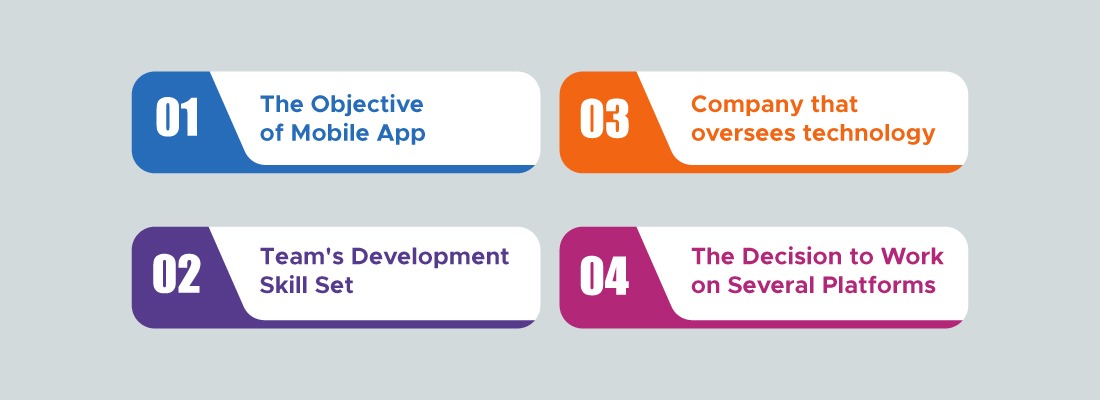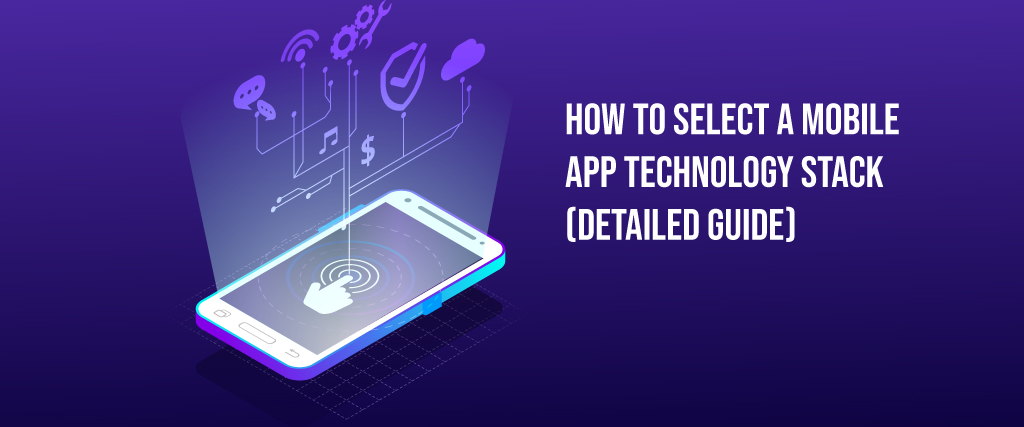There is very little chance that you haven’t heard of the term “technology stack” if you’ve been working in the field of mobile app development for even a month.
Whatever method you use for developing mobile apps, will never be successful unless you put up a solid technical stack.
A software product’s future is determined by its technology stack, while investor funding for mobile apps is determined by its type.
We’ll get to the precise concept of tech stack eventually, though.
For now, let me give you a summary: Your mobile app’s present and future depend entirely on its technology stack.

Entrepreneurs can much more easily accomplish their final company goals when they define and select the technological stacks for app development early on.
We will examine the idea of a software platform for mobile apps in greater detail in this post, as well as a guide on how to select the ideal software system for your phone app.
Additionally, we will discuss the tech stacks used to power the various types of apps.
Why is it Vital to Choose the Top Tech Platform for Mobile App?

Choosing the appropriate mobile app software system will affect several factors.
The technology mix you decide to use for its development has a significant impact on the likelihood that your software will be reliable or be able to scale to various operating system versions.
A mobile application’s current performance and potential for future expansion will be significantly impacted by any incorrect or rash, an ill-considered decision regarding the selection of only the finest technological stack.
Although these are all the issues connected at a much more profound level, that you would only encounter.
Once you were far into the mobile development of an application, there are also several challenges connected at the initial level with the incorrect selection of the mobile app software platform.
Now that you are aware of what a software platform is and why it is crucial to understand it.
It is time to examine something important to an application development firm even more than understanding a technology stack:
Understanding how to select the optimal technology stack for a mobile application.
How Do I Choose the Top Technology Stack for Developing Mobile Apps?

After thorough evaluation and analysis of a variety of aspects, the optimum mobile application development technological stacks that can drive your product for success are produced.
The following are the variables that frequently mobile application app technology stack selection for mobile app development:–
App Considerations

● some elements differ from one app to another.
● The platform that the app would run on
● The network environment it would operate in is
● The user experience that you want to create
● The anticipated time of market entry
● among other things, the technology it would utilize.
● Together, these app components assist in determining the combination of frameworks, libraries, languages, and technology that would be used to create the mobile app.
The Objective of Mobile App

The objective that your mobile app will pursue greatly influences the tech stack that is selected for its development.
When deciding between low latency, quick response mobile app, and a high latency app, there would be a clear difference in the technology stack.
A mobile app that depends on processing a lot of data requires a considerably more powerful tech stack than one that revolves around simple interactions.
Team’s Development Skill Set
Many various languages and frameworks tend to provide the same results, yet they each have unique characteristics that set them apart from one another.
Now, the best course of action is to rely on the developer’s skill set when choosing between two somewhat similar tech stacks.
The cost of developing a mobile app will go up along with the development time and effort if you use a tech stack that your staff is not accustomed to using.
The company that oversees technology
The parent business of the software platform you choose also influences your decision greatly.
Some brands provide far greater community support and documentation than others.
When it comes to advanced development possibilities and community support, Google, Apple, and Adobe are recognized to provide much more than Facebook with React Native.
The Decision to Work on Several Platforms
An app that operates on one device would have a very different technology stack than one that works on Android, iOS, and the Web.
To make your mobile app transferable between platforms, such as in the case of hybrid apps or cross-platform application development.
You will need to introduce a higher level of scalability than would be necessary for native app development.
The tech stack’s security level
Every technology used to create mobile apps is equipped to deal with any security flaws that may arise once an app is released on the market.
When you select a mobile software stack that is either poorly documented or necessitates developing numerous lines of code, a problem arises.
FAQs
● How does the tech stack work?
Technology stack refers to the grouping of programs, languages, frameworks, APIs, and other components used to create a complete piece of software.
● Why do people utilize app stacks?
The entire design process, development, and maintenance depend on the mobile app technology stack.
An incorrect choice here could cause your app to disappear from the market considerably sooner than it would have otherwise.
Final thoughts
Our blog aims to educate readers on tech stacks and how to select the most appropriate cross-platform mobile stack for their company.
One of the most important factors in creating a project with the potential for future growth and development is selecting the appropriate technological app stacks.
Find and contact a reputable app development company if you have any questions or need assistance with developing a mobile app.
They will provide the best mobile app development services and assist you during the entire process.
Read More: HOW SHOULD YOU CHOOSE YOUR MOBILE APP DEVELOPMENT PROJECT’S, TECH STACK?
























